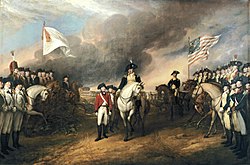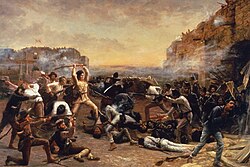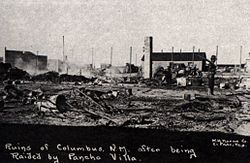| Part of a series on |
| War (outline) |
|---|
 |
This is a list of conflicts in the United States. Conflicts are arranged chronologically from the late modern period to contemporary history. This list includes (but is not limited to) the following: Indian wars, skirmishes, wars of independence, liberation wars, colonial wars, undeclared wars, proxy wars, territorial disputes, and world wars. Also listed might be any battle that was itself only part of an operation of a campaign of a theater of a war. There may also be periods of violent civil unrest listed, such as: riots, shootouts, spree killings, massacres, terrorist attacks, and civil wars. The list might also contain episodes of: human sacrifice, mass suicide, genocides, and other related items that have occurred within the geographical area (including overseas territories) of what is today known as, the "United States of America."
























